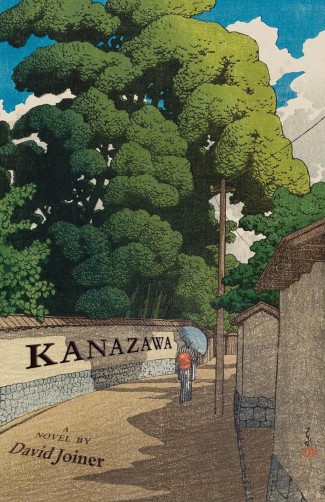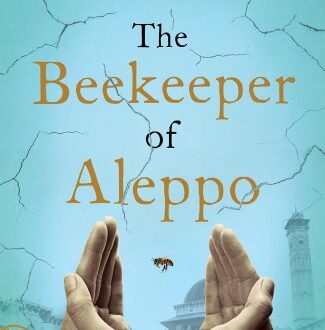Kanazawa by David Joiner
The story contained with the pages of Kanazawa is both compelling and sometimes frustrating. It’s a story that many (white?) immigrants who live in Japan can appreciate – especially those with Japanese partners. Not unlike Life is Elsewhere/Burn Your Flags, martial conflict and personal identity are a big part of the story. However, the approaches are vastly different. Kanazawa is slow and meandering and the path to the final conclusion is initially obscured. Yet this doesn’t make the story boring. On the contrary, the protagonists dialogue manage to remain engaging throughout.
Both the title, and perhaps the cover itself, suggest a cultural story. This is true. Various aspects of culture and language are brought to life by David Joiner in Kanazawa. However, it’s not just a story of Japanese culture or a story of a mixed culture marriage. We do not just view the culture from the protagonist’s perspective. As readers, we must also interact with the culture depicted within directly. Keeping an open mind is essential. That is the only way to enjoy Kanazawa and the world that Joiner has created.
The Story

Kanazawa follows the protagonist, Emmitt, as he leads his life in the Japanese city of Kanazawa with his wife Mirai. Emmitt loves Kanazawa and Mirai, but the situation quickly becomes grey when Mirai suddenly backs out of plans to purchase their dream home within the city. Emmitt is shocked and disappointed – even more so when Mirai starts showing interest in a life in Tokyo, which he dislikes. This naturally arises in conflict between the two. Further conflict ensues when Emmitt quits his job teaching at a university in Kanazawa.
In the aftermath of his decision, Emmitt finds himself drawn into the world of Izumi Kyoka, Kanazawa’s most famous author. His mother-in-law is a big fan and she hopes that he will help translate Kyoka’s stories for her literary club. In the process, he also gets wrapped up in the past of Mirai’s parents and a mutual friend of theirs who died 30 years prior.
Spanning the city of Kanazawa and the surrounding mountainous region, Emmitt must make a journey to find out who he really is. On his journey, he will find out things about himself and the family that he loves that surprise and challenge him. How he reacts to these surprises and challenges will determine his future.
Culture and Identity
In Kanazawa, Joiner has created a story that focuses on culture in a very explicit way. Emmitt is a huge fan of traditional Japanese culture. This love fuels his passion for the city of Kanazawa and his eventual interest in Izumi Kyoka. Mirai, an ikebana teacher, is also passionate about it in her own way. However, the two often clash at this point. Emmitt desires an environment that no longer exists, while Mirai enjoys an ancient practice that has modernized. This dichotomy shows just how difficult culture can be.
The friction between Mirai and Emmitt is a key part of the novel. Yet culture is never explicitly blamed. Perhaps this is because it cannot be. The cultures we grow up in deeply shape who we are, but the same can be said about the culture we adopt. Emmitt has embraced his adopted culture completely and there is nothing wrong with that. However, it is important to recognize that cultural appreciation is a slippery slope. How you express your appreciation and adjust your expectations can change everything. This is something that Emmitt learns to recognize throughout the novel.
Appreciating Kanazawa and Kyoka
Another place where Joiner has really excelled is in the portrayal of Kanazawa. It is clear from the descriptions in the novel that he loves the city just as much as Emmitt does. Despite having never travelled there, it was easy to imagine the various streets that Emmitt explored. Even without, the names of real places throughout the city are dispersed throughout. It would be no trouble at all to look them up. Kanazawa isn’t just a story about an American man in Japan and his wife. It is a tribute to the city of Kanazawa.
The same could be said for Joiner’s efforts to educate readers about Izumi Kyoka. Emmitt’s mother-in-law regularly teaches him about Kyoka and other historical facts about the city. However, this works to educate readers too. The addition of a section on Izumi Kyoka himself after the novel’s conclusion makes this effort even more obvious. David Joiner’s passion for the places and authors within the novel is obvious. And reading the book was all the more enjoyable for it.
In Conclusion
Emmitt’s story and how he interacts with Japan offer many lessons about living in the country. Despite his struggles, his life articulates something important – there isn’t a right or wrong way to live. You must simply keep going forward. Sometimes the results will be good, other times, not so much. Like Emmitt’s conflict with Mirai, this will not always be in your control. Mirai’s parents also show this. We have to do the best with what we have. That’s all anyone can do. And if we’re lucky, maybe we’ll get to live in a place we love as much as Emmitt loves Kanazawa while we’re doing it.
Note: While the publisher sent me this book for review, all opinions expressed within this review are my own.




